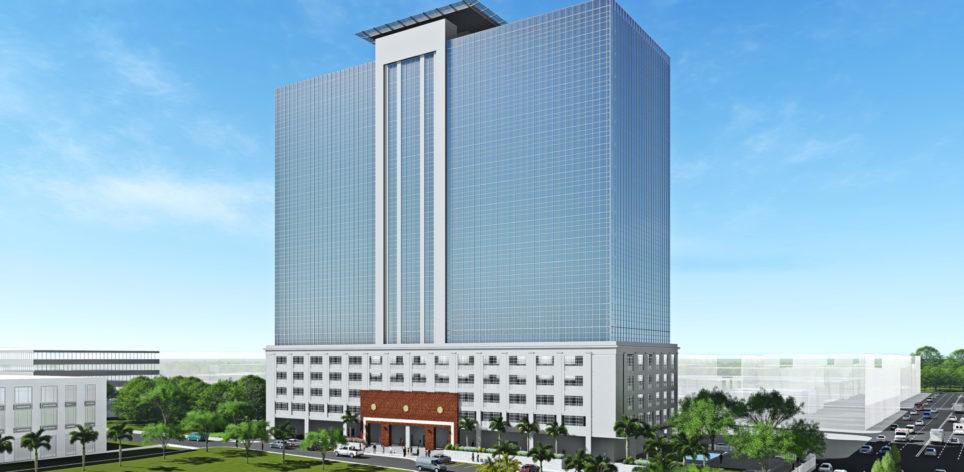
This is what the Resource Center Building is expected to look after construction./contributed
CEBU CITY, Philippines — The P1.3-billion resource center project of the Capitol complements the P17-billion Bus Rapid Transit (BRT) project.
This was the reason cited by Cebu City Mayor Tomas Osmeña as he expressed his support to the controversial building that was being built within the Capitol compound along N. Escario Street, one of the routes of the BRT project.
Read more: Villarete: BRT developments to go full speed in May, but project’s full operation pushed to 2022
“No one really asked me whether I am in favor [of the building]. The general sentiment is that it looks lousy but to tell you frankly, I’m in favor,” Osmeña said,
“People can come in from the province and go directly to the Capitol, and I think that’s a great idea because it works for the people,” the mayor added.
Read more: Cebu Provincial Board gives nod to P1.3 billion loan with DBP for 20-storey resource center project
Osmeña explained that if clients of the Capitol would ride the BRT, it would work well with the parking constraint in the Capitol because the people would not have to bring in their vehicles.
He added that in Curitiba City in Brazil, which had been Osmeña’s model for the BRT implementation, high rise establishments were only allowed to be built along the BRT route.
“That way, they continue to have more passengers and it becomes more and more efficient,” said Osmeña.
Read more: Capitol urged: Rethink design of proposed 20-storey building
The 20-story edifice in the Capitol has been hounded with controversies and opposition as heritage advocates suggest that it will destroy the facade of the main Capitol building, which is declared a heritage site.
Despite its ongoing construction, an application for a temporary restraining order filed by third district Representative Gwendolyn Garcia is yet pending before Toledo City Regional Trial Court./dbs